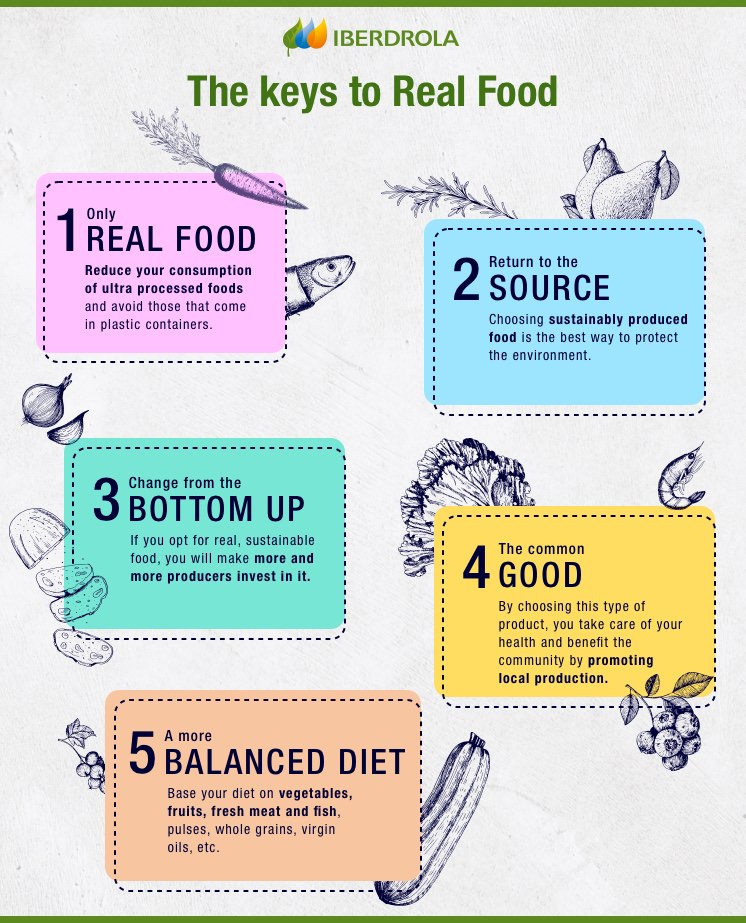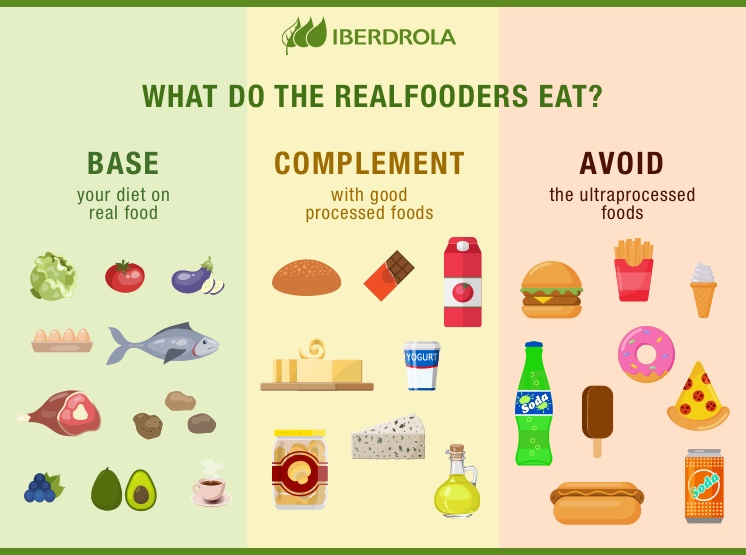Real food
Real Food, the latest trend in healthy, sustainable eating
Real Food is a trend that focuses on food products that have been minimally processed or in a way that does not lessen their quality or diminish their properties. This movement, which is fashionable around the world, defends the right to healthy and environmentally friendly food.

As early as the 1980s, several studies sponsored by international bodies such as the Food and Agriculture Organization of the United Nations (FAO) developed a new trend that united concepts such as nutrition and sustainability to create the concept of a sustainable diet. According to the FAO, a sustainable diet is one that has a reduced environmental impact, protects biodiversity and ecosystems, promotes a healthy lifestyle and is nutritionally adequate.
However, in recent decades, the increasingly dizzying pace of Western societies has had precisely the opposite effect: an increase in the consumption of processed and ultra-processed foods, so-called fast food, and, in short, unhealthy eating habits that are far removed from the sustainable diet proposed by the United Nations Organisation (UNO) through the FAO. Faced with this situation, voices have been raised in favour of the creation of alternatives, such as Real Food.
What is real food
The realfooding movement emerged recently as a way to reduce the consumption of unhealthy food. This trend, which became popular through social media such as Instagram but also received support from businesses and public institutions, advocates so-called "real food" but goes much further. Real Food is considered to be all those foods that have not been industrially processed or foods that have not had their natural qualities interfered with or the quality of their composition reduced.
Here the question arises, are all processed foods bad? The answer is no, because, as the experts point out, there are foods that require some processing to make them safer, improve their preservation or help in their consumption. The problem is the foods that lose some of their properties during processing or have their quality reduced with the inclusion of industrial ingredients.

SEE INFOGRAPHIC:: The keys to Real Food [PDF]
What foods to use for a real food recipe?
Realfooders are the followers of this movement, which soon became almost a lifestyle. Perhaps they are the ones who have best internalised the FAO's concept of a healthy diet, but what does a realfooder eat and what don't they eat?
- YES. Real Food
Unprocessed foods, minimally processed foods, or foods that has been processed but haven't been negatively affected by the processing. For example: vegetables, tubers, greens and fruits; nuts, legumes, herbs, spices and seeds; coffee and teas; 100% whole-grain cereals; unprocessed fish, seafood and meat; eggs and fresh milk.
- YES. Good processed foods
Foods that have been processed industrially but are beneficial and safe, such as any vacuum-packed real food, extra virgin olive oil, 100% wholemeal breads, dark chocolate or cocoa powder over 70%, vegetable drinks with no added sugar, etc. A good way to distinguish them is that there are only one to five ingredients on the label.
- NO. Ultra-processed foods
Realfooders avoid these industrial preparations at all costs. In addition to being less healthy, they are a major cause of obesity among all age groups. Some examples of these foods are: industrial baked goods, refined cereals, salted snacks, sweets, precooked foods ready to be heated or fried, etc.

Tips for sustainable food
For realfooders, the relationship between their diet and the effect it has on the environment is also very important. In this respect, the FAO offers a series of tips for sustainable food:
Balance your diet. Choose a diet rich in greens, pulses, fruit and vegetables.
Reduce consumption. Decrease the amount of meat, fish and dairy in your diet.
Opt for natural products. Forget about precooked, transgenic and processed products.
Avoid waste. Only buy the amount of food you are going to use.
Choose organic. Include products that are free from pesticides and fertilizers in your diet.
Look after the environment. If you eat seasonal foods, you will reduce CO2 emissions.
Support fair trade. Choose foods that promote a respectful business relationship.
Join a consumer group. This will give you access to local products without involving middlemen.
Advantages and disadvantages of real food
The advantages of joining this movement are varied: not only does it promote a healthier lifestyle but also, as we have seen above, it contributes to a more sustainable food production system that has a positive impact on combating climate change. In addition, for example, realfooders prefer to buy in bulk, which helps to reduce the consumption of plastics. The disadvantages could include the following: people confuse following a Real Food diet with a slimming diet; the recommendations of realfooding are taken to extremes; or, because it is a viral movement on social media, some of its messages may be misinterpreted or distorted.




